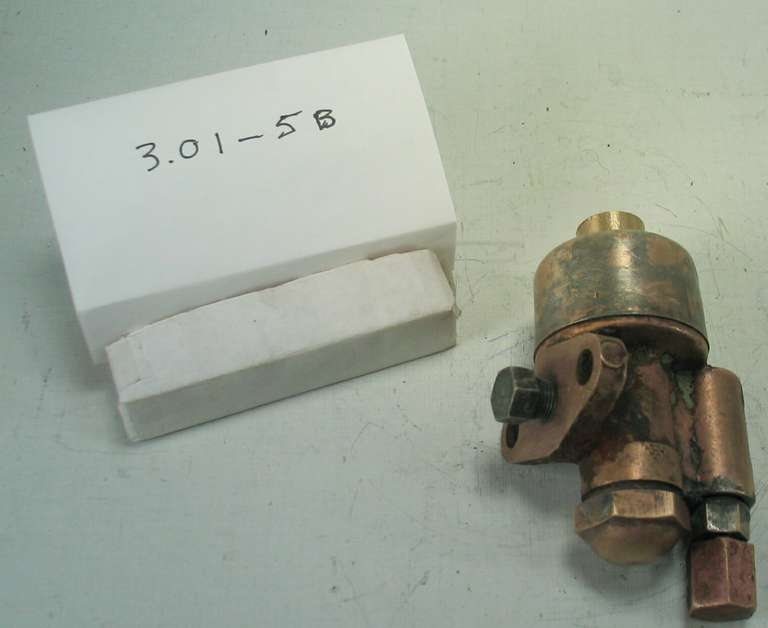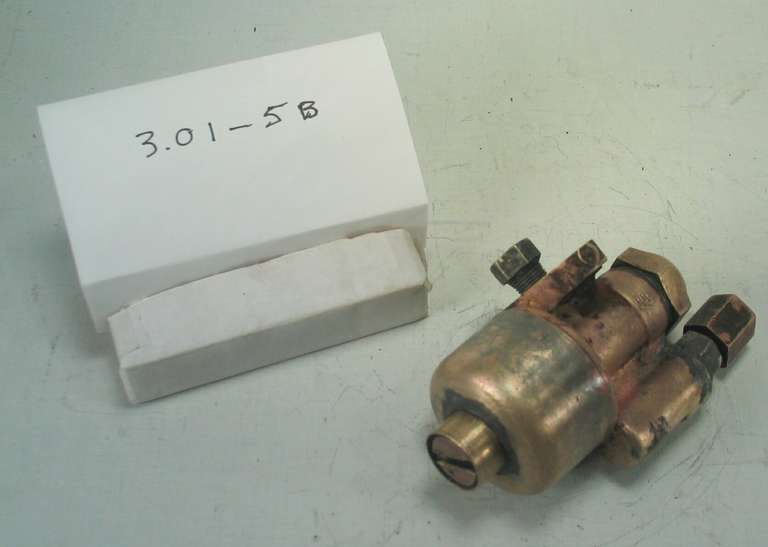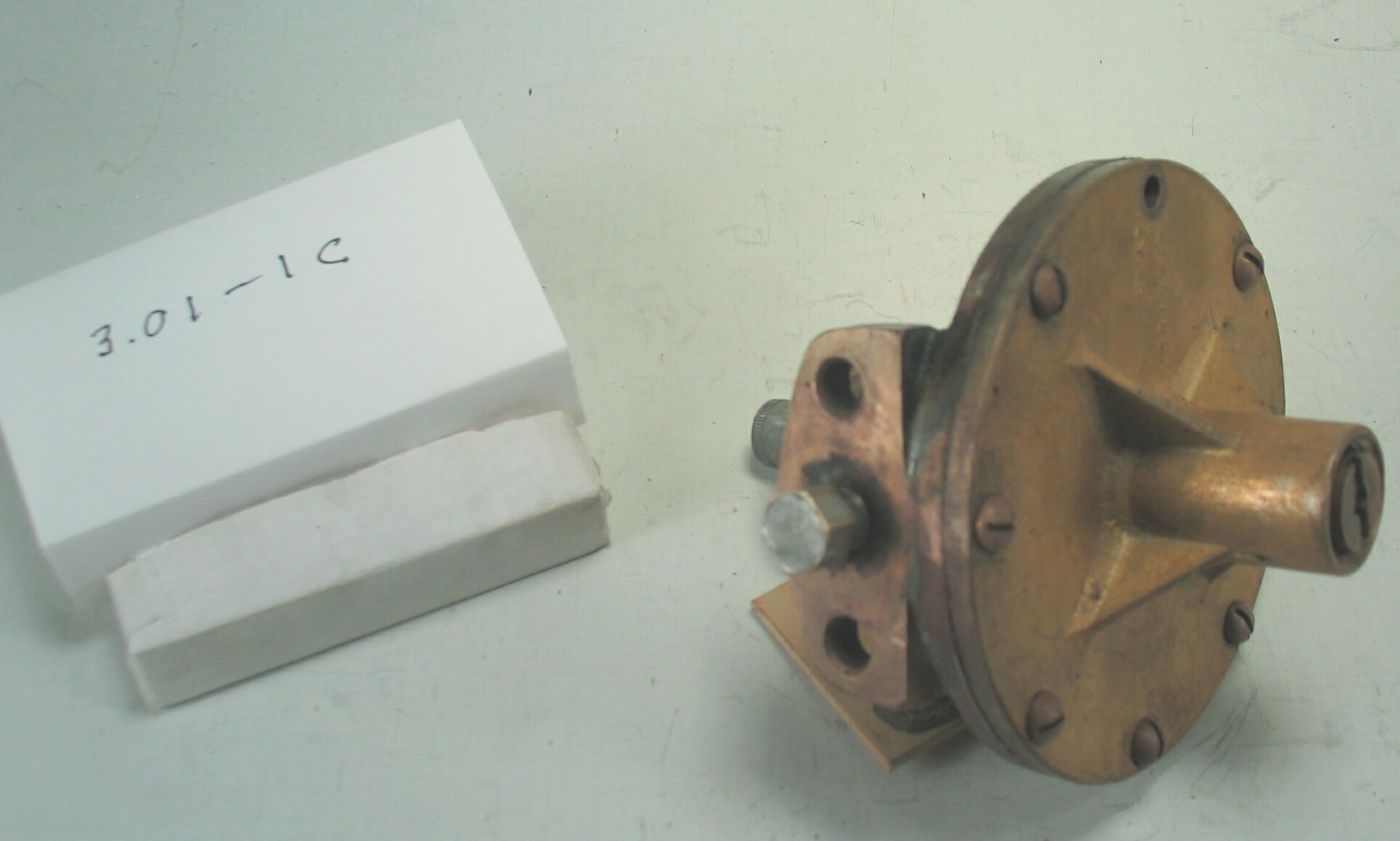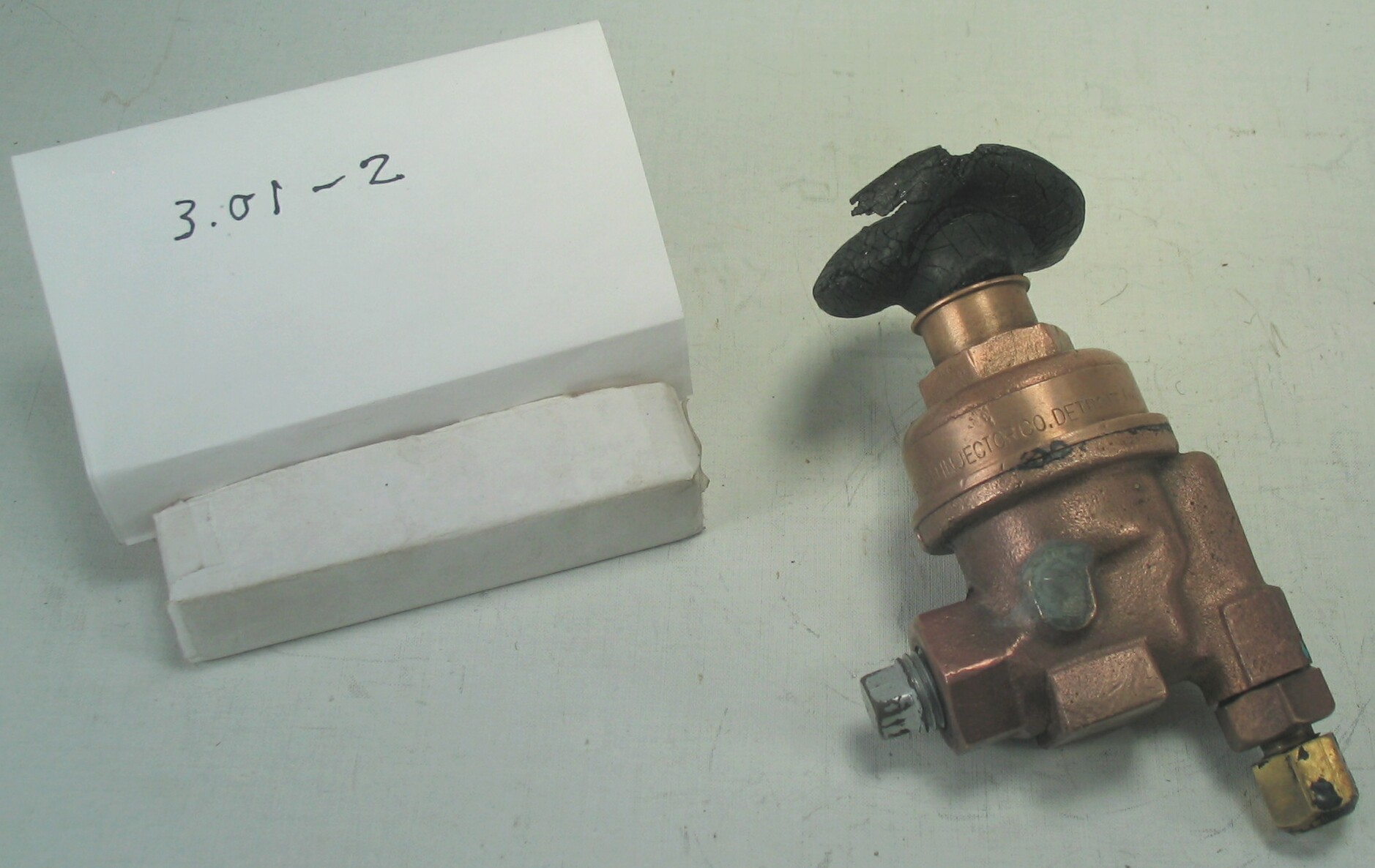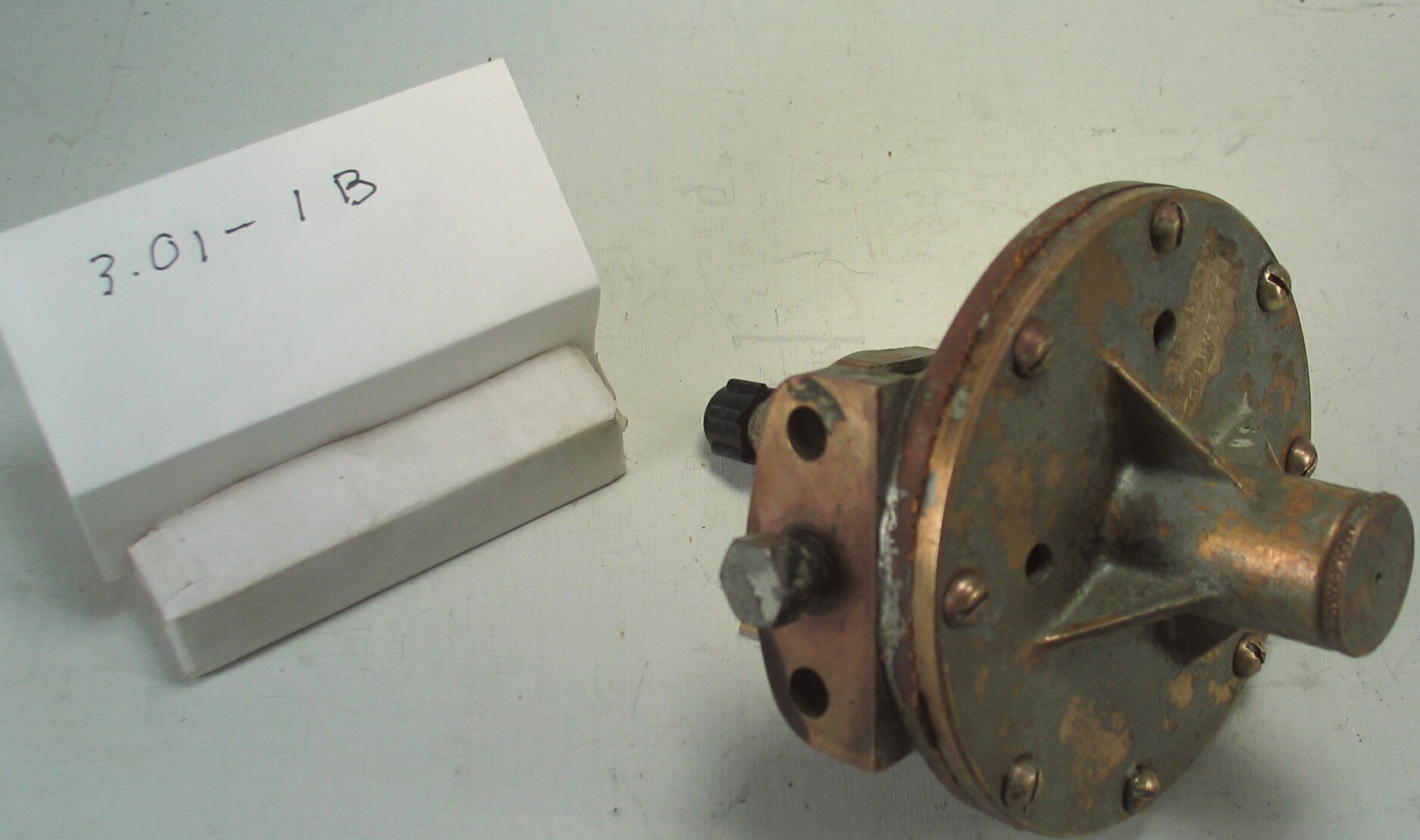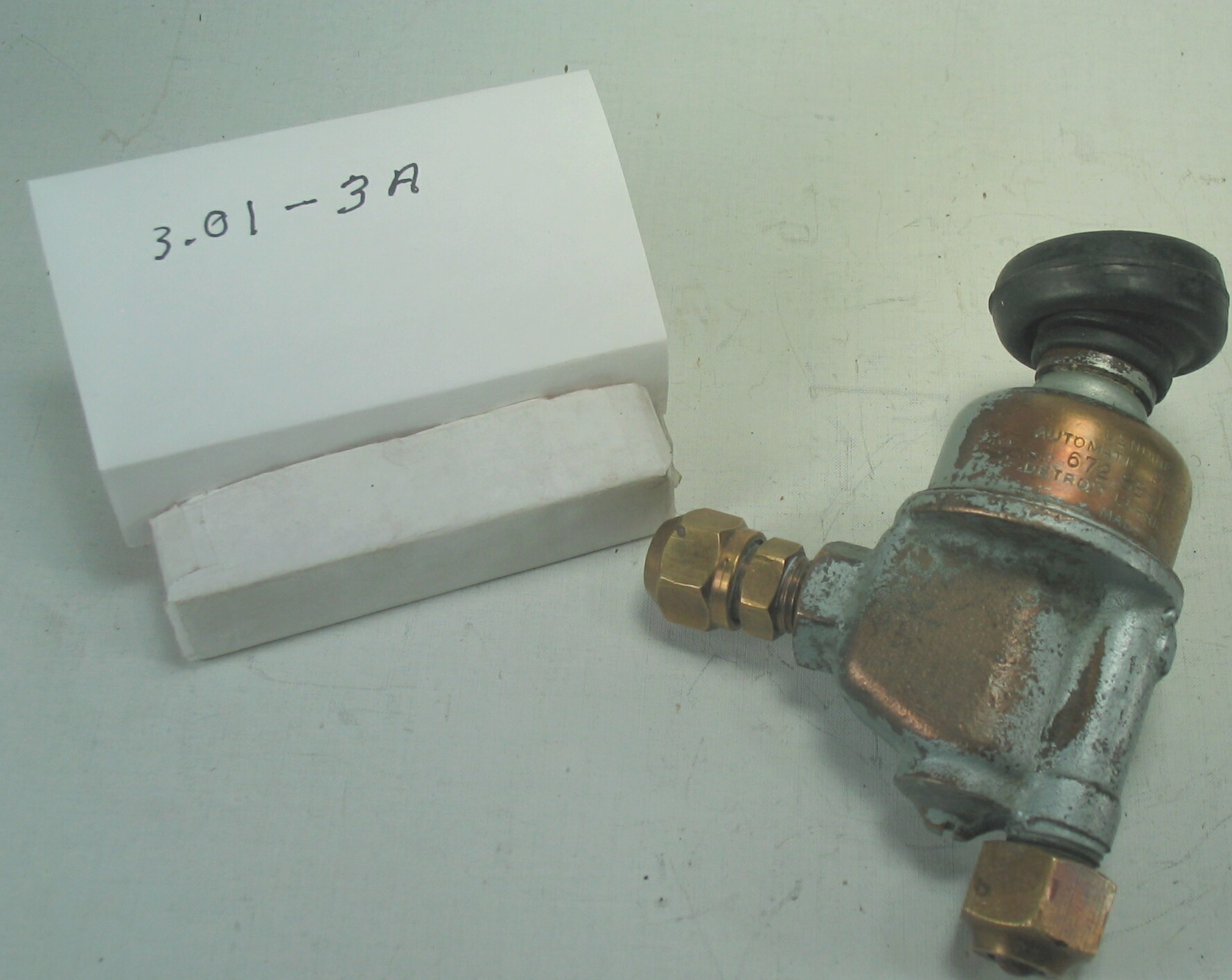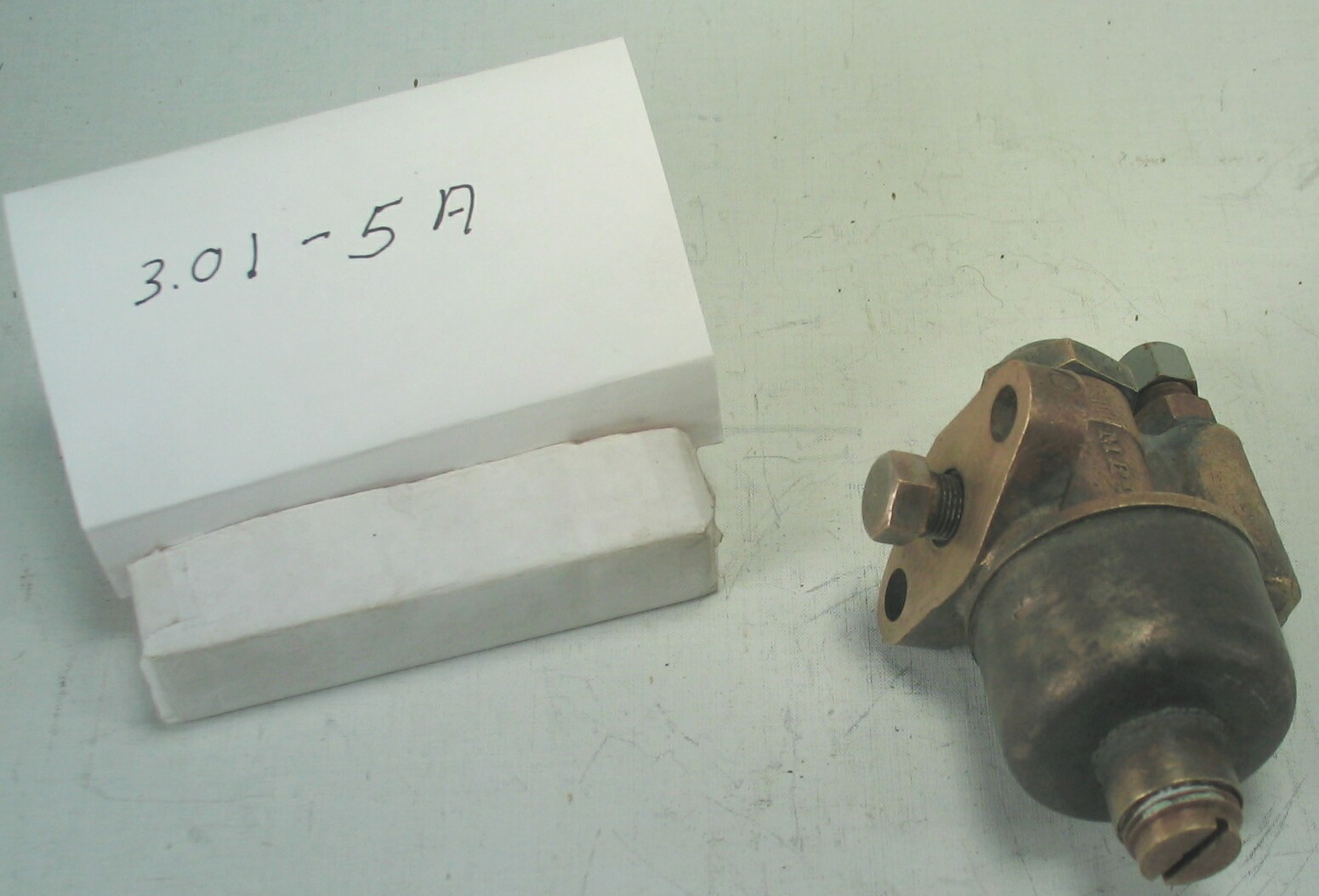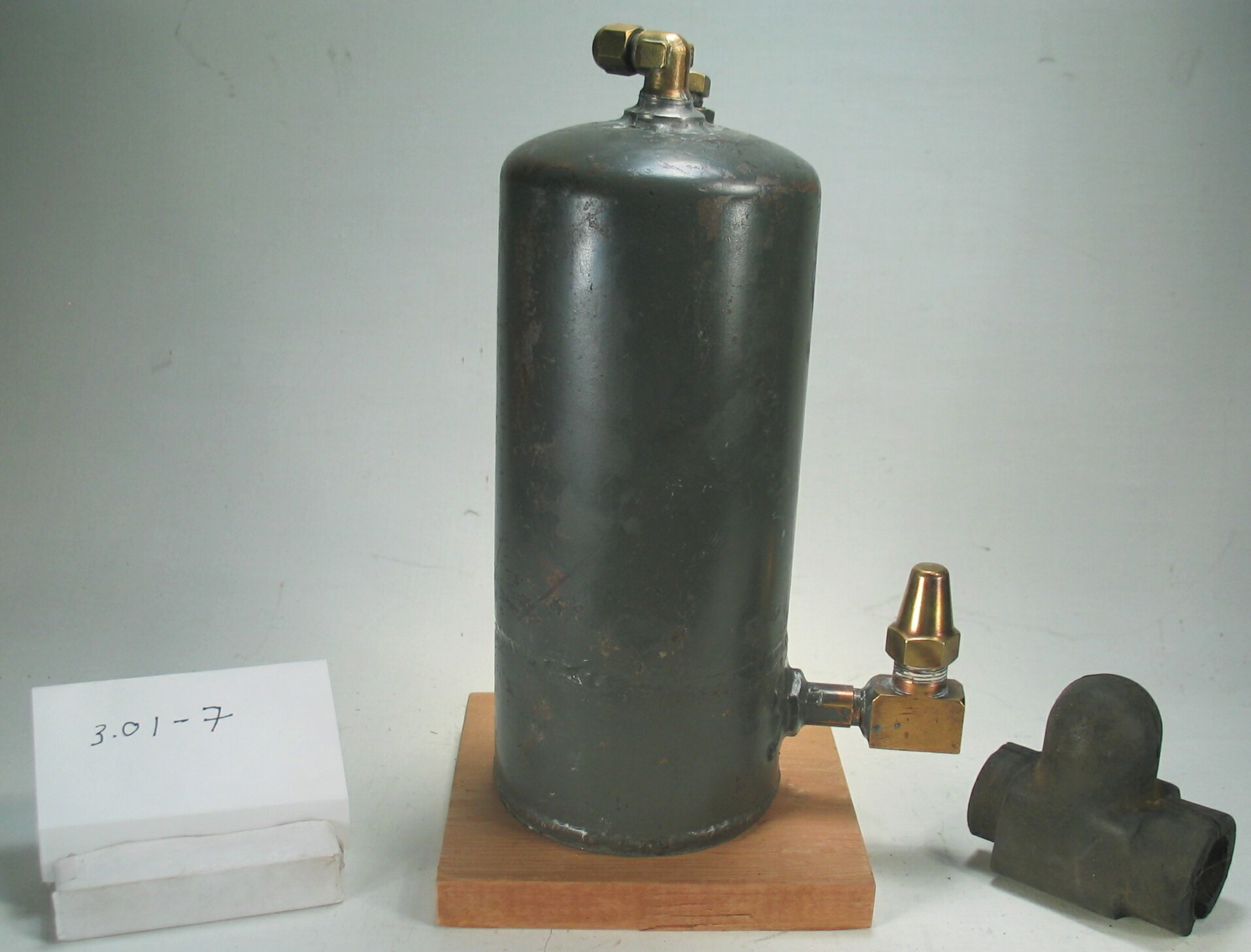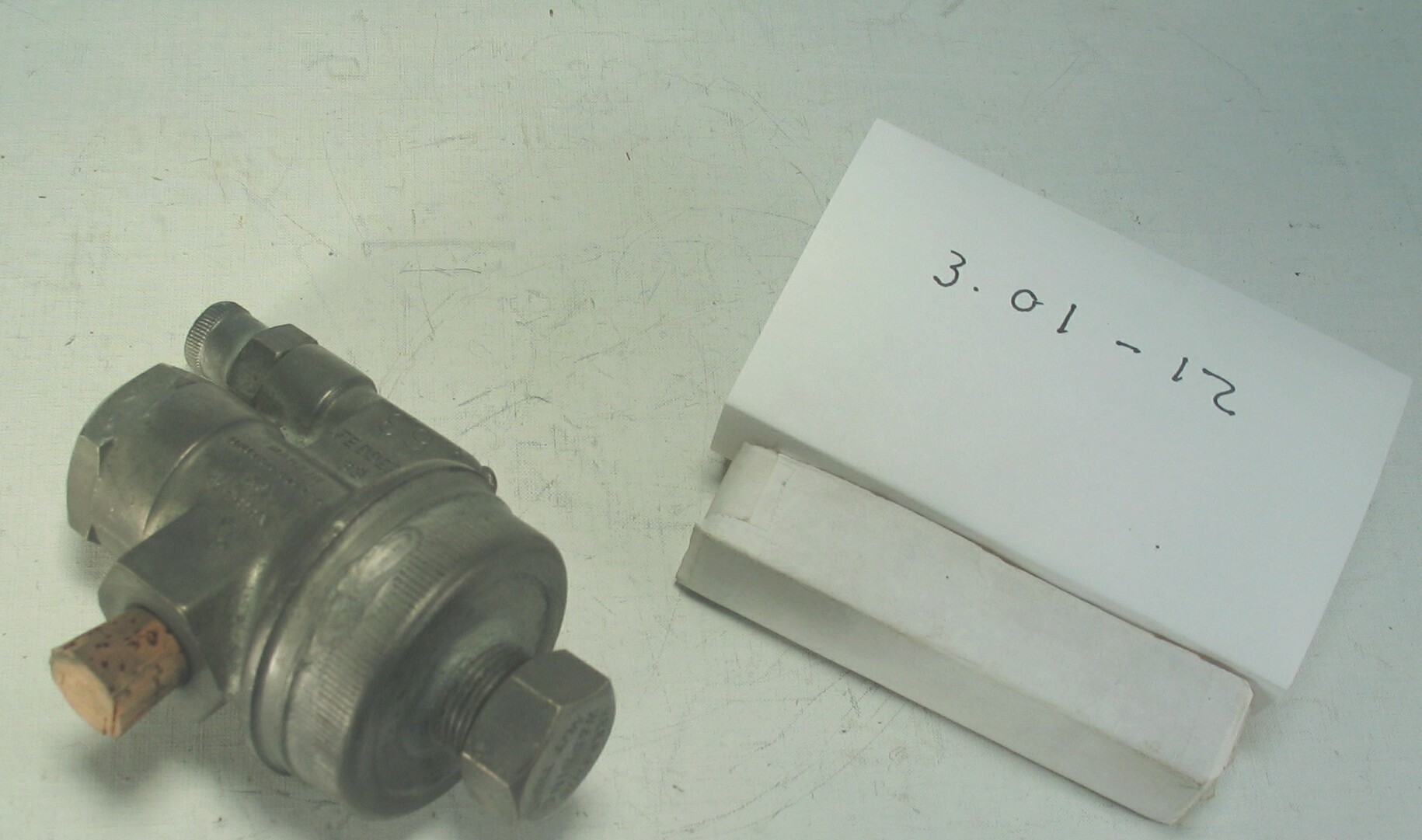3.01-5B: Kelvinator 1932 Second Generation Expansion Valve
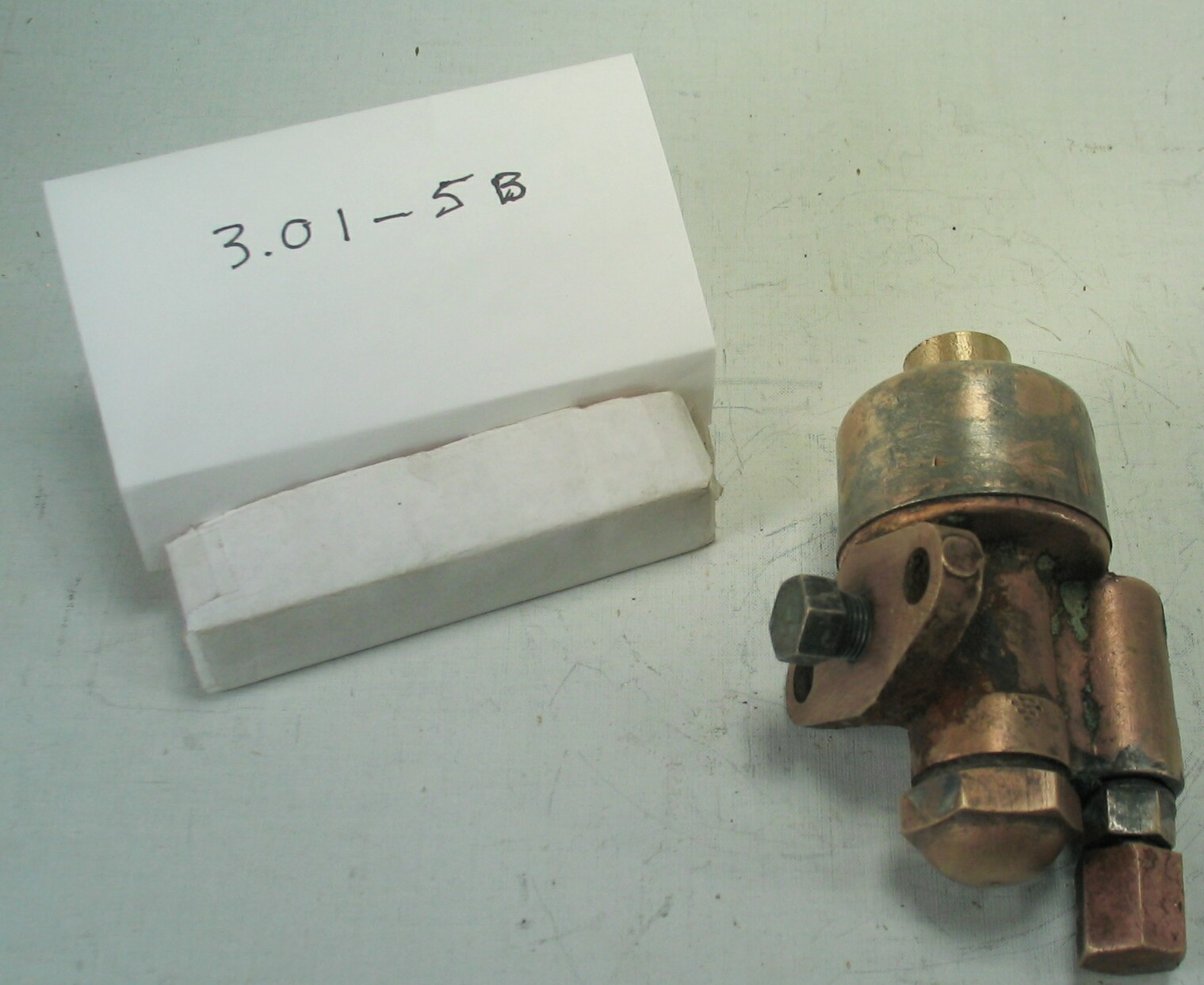
| HHCC Accession No. 2006.049 | HHCC Classification Code: 3.01-5B |
|---|
Description:
An early, compact, spring compensated, adjustable, automatic expansion valve for use on ‘dry evaporators’, apparently manufactured for Kelvinator by the M B Company, with heavy cast brass body, flange mounted and equipped with bronze bellows, screw adjustment shaft seal, engineered for sulphur dioxide refrigerant, Kelvinator Model C1, circa 1932. One of a set of two identical valves, see Ref code 3.01-5A, ID # 172
Group:
3.01 Refrigerant Flow Controls - Household
Make:
M B for Kelvinator
Manufacturer:
M B Company
Model:
Kelvinator C1
Serial No.:
Size:
5 x 3 x 3 in. h
Weight:
2 lbs
Circa:
1932
Rating:
Exhibit, education, and research quality, illustrating the engineering design, construction, and operating principles, of an early automatic expansion valve with bellows style adjustment stem seal, employed for the metering refrigerant flow into cooling units in mechanically cooled household and small commercial refrigeration applications in Canada.
Patent Date/Number:
Patent applied for
Provenance:
From York County (York Region) Ontario, once a rich agricultural hinterlands, attracting early settlement in the last years of the 18th century. Located on the north slopes of the Oak Ridges Moraine, within 20 miles of Toronto, the County would also attract early ex-urban development, to be come a wealthy market place for the emerging household and consumer technologies of the early and mid 20th century.
This artifact was discovered in the 1950’s in the used stock of T. H. Oliver, Refrigeration and Electric Sales and Service, Aurora, Ontario, an early worker in the field of agricultural, industrial and consumer technology.
Type and Design:
Automatic spring compensated Pressure actuated Bronze bellows seal
Construction:
Heavy cast brass body
Material:
Special Features:
Accessories:
Capacities:
Performance Characteristics:
Operation:
Control and Regulation:
Targeted Market Segment:
Consumer Acceptance:
Merchandising:
Market Price:
Technological Significance:
An example of the new generation of compact, more precisely engineered and performing expansion valves emerging early in the 1930’s, used to maintain cooling units [evaporators], in mechanically cooled refrigerators, at the desired refrigerant pressure. Dramatises the major gains made by the industry over a period of less than 5 years, during a period of feverish research and development using the scant knowledge and experience available to workers in the field at the time, compare ID # 165 to 168
- This artifact of history tells the many stories of early adoption of this particular fluid flow technology, the automatic expansion valve. After a brief flurry of excitement over the use of more costly and delicate float operated devices, as a more efficient means of flow control, industry engineers would return to the automatic expansion valve in the early 30’s. But by then the automatic expansion valve would be a smaller and much more precisely calibrated and efficient device. While the automatic expansion valve was less efficient in its effective use of evaporator surface than high and low side float systems [See HHCC Series 3.01 artifacts, ID # 175 and 176 for example], it had the advantage of reliability, maintainability and affordability, as well as serviceability.
Industrial Significance:
It was a period of rapid industry growth, as well as technological development and innovation in the refrigeration industry. Systems were becoming increasingly complex as the industry moved to improve their reliability and performance. Small satellite manufacturers, characterized here by the M B Company, were attracted to the rapidly evolving field in the hopes of securing contracts for the production of component parts. The phenomena of industrial out-souring had been discovered by Kelvinator.
The fact that the M B Company seems to have been relatively short lived tells many of the stories of the times - companies without the resources for sustainability in a rapidly evolving field.
The engineering sophistication and advancements in manufacturing, assembly and materials utilization, represented here, in contrast to ID # 165-168 stands as a remarkable industry achievement.
Socio-economic Significance:
Socio-cultural Significance:
The socio-cultural significance of the impact of the unobtrusive, automatic expansion valve on life in Canada, throughout the early part of the 20th century, would be hard to over-estimate. It would become the quintessential, automated refrigerant flow regulating device used in homes, farms and commercial refrigeration applications across the country, giving way to other flow control devices later in the century, including thermostatic expansion valves and capillary lines. It was a period in which machinery in the home was often not at all welcome, being viewed with the suspicion that comes with novelty. Machinery belonged on the farm and on the factory floor, but not in the Canadian home. Here it was considered noisy and hazardous, a potential threat to personal and private property. The mere notion of a self regulating, mechanical device that could be trusted to stop and start and self regulate itself reliably, over long periods of time was simply not part of popular experience of ordinary Canadians of the time. Thus, in addition to the immense array technical problems which remained to resolved, there was an equally large array of socio- cultural challenges to be over come by manufactures in convincing their public to be early adopters of refrigeration technology in the home - in the face of massive mistrust and apprehension. Conversely however, for those that were in a financial position of enjoying the many benefits of the technology, there were multiple factors tending to attract advocates and early adopters. Included were: the human need to be recognized as an early leader in adoption, the need for socio-economic status in the community, as well as the allure of new taste sensations, a break with the overwhelming, often desperate boredom of the daily dietary offerings of the period.
Donor:
G. Leslie Oliver, The T. H. Oliver HVACR Collection
HHCC Storage Location:
Tracking:
Bibliographic References:
Kelvinator Service Manual, Commercial Section, March 1934, Kelvinator of Canada
